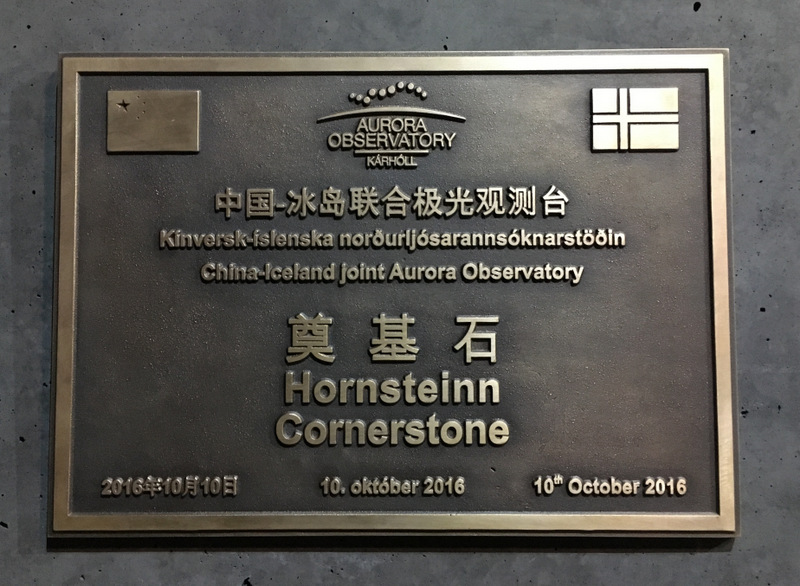Monday October 10th saw another milestone in the continuing evolution of Icelandic-Chinese cooperation in scientific research: a cornerstone-laying ceremony took place at the new Chinese-Icelandic Aurora Observatory (CIAO) in Kárhól in the north of Iceland.
The ceremony was attended by VIPs from China and Iceland. Emceed by Managing Director of the Northeast Iceland Development Agency (NIDA) Reinhard Reynisson, he opened the ceremony, after which Sun Shuxian of the Chinese State Oceanic Administration (SOA) and Icelandic Minister of Education, Science and Culture, Mr. Illugi Gunnarsson laid the cornerstone for the observatory.
This was followed by speeches from:
- Sun Shuxian of the Chinese State Oceanic Administration (SOA)
- Tómas Orri Ragnarsson, Counsellor for Arctic Affairs at the Icelandic Ministry for Foreign Affairs
- Zhang Weidong, the Ambassador of the People’s Republic of China to the Republic of Iceland
- Huigen Yang, Director-General of the Polar Research Institute of China (PRIC)
- Hallgrímur Jónasson, General Director of the Icelandic Centre for Research (RANNÍS)
- Hu Hongqiao, Station Leader of the China-Icelandic Aurora Observatory (CIAO)
China’s Ambassador to Iceland Zhang Wiedong hailed the observatory as a “milestone in cooperation and friendship” between the two countries and stated that the CIAO would be open to scientists from around the world.
PRIC Director-General Huigen Yang called the observatory an “example of Arctic cooperation” that will help to satisfy the curiosity of both scientists and tourists interested in Aurora.
General Director of RANNÍS Hallgrímur Jónasson emphasized that both Chinese and Icelandic researchers “will collect one set of data” that will be open to the international scientific community.

Research cooperation between China and Iceland has been developing in parallel with its developing political and economic relations. The CIAO - a project that has been in the works for several years - takes Chinese-Icelandic research cooperation to a new level.
In 2012, the Polar Research Institute of China and the Icelandic Centre for Research (RANNÍS) signed a memorandum of understanding on research cooperation. Not long after, the idea of building a joint Chinese-Icelandic Aurora Observatory was developed. By 2014, old farmland had been purchased to be the future site of the observatory, and a groundbreaking ceremony took place in June of that year.
While there were a few setbacks to the construction schedule due to bad weather conditions in early 2016, the observatory building is nearly complete, and the first scientists will start conducting research at the station this coming winter. The remainder of the building, including a visitor’s centre that will feature interactive educational exhibits on aurora, is expected to be completed in summer 2017.
Iceland is in an ideal location to observe nighttime auroras, as it is positioned at the end of the plasma sheet in Earth’s magnetosphere. Auroras are caused when plasma from the sun’s solar wind interact with gasses in Earth’s atmosphere. They occur near the planet’s Magnetic North and South Poles.



